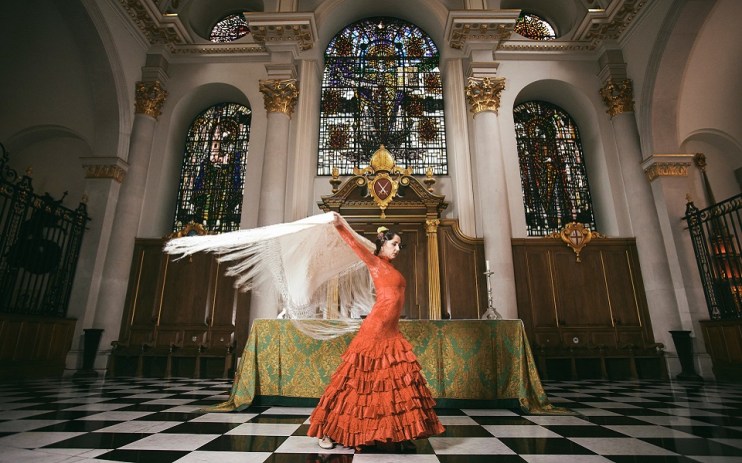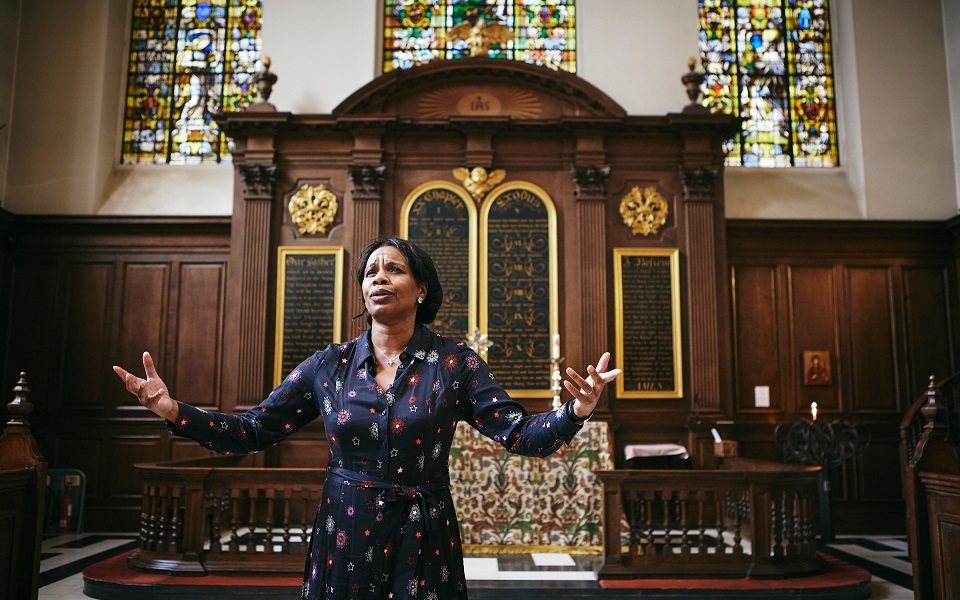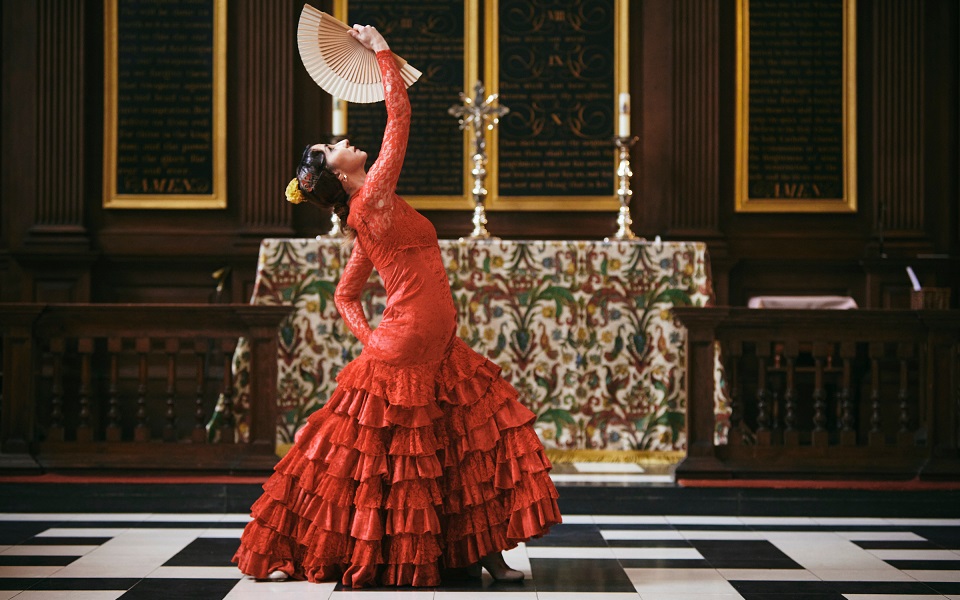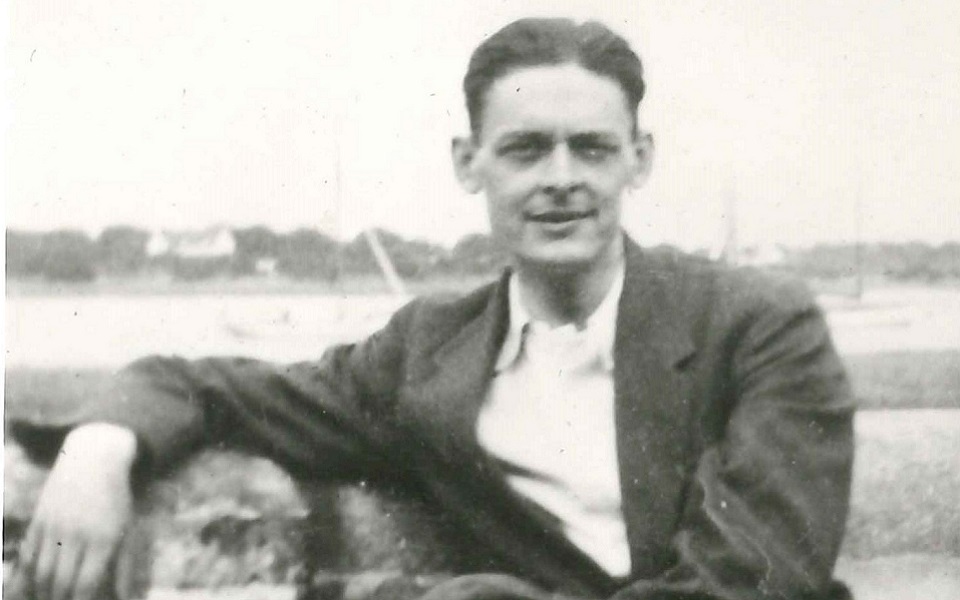Live music and flamenco dancers to transform the City into Waste Land

Flamenco dancers and DJs playing hip-hop aren’t the first things you think of when picturing the centuries-old churches in the City of London. Nor is Killing Eve actor Fiona Shaw, but this weekend all three contribute to a kaleidoscopic arts and culture festival.
The three-day Fragments event is a celebration of the centenary year of T.S. Eliot’s poem, The Waste Land, thought to be one of the greatest poems of the 20th century. But don’t worry if you last read T. S. Eliot at university and your memory is as hazy as your recollection of those uni nights out – you needn’t have even read the poem to enjoy these performances.
It’s the excuse many of us need to finally step inside the gorgeous churches around the City that we take for granted. Five routes mean guests only have a short walk between each church before the next performance, and taking place at the weekend, it’s a privilege to see these spaces without the hordes of workers rushing past.

“The man who runs this church said ‘You can do what you want,’” Fragments festival programmer Sean Doran tells me as we enter St Clement Eastcheap, a short walk from Monument tube station. “So we had freedom. You can’t do that in many churches.”
In here, Palestinian musician DJ Sotusura will spin electronica music on vinyl with roots in contemporary Arabic music culture – a million miles from O Come, All Ye Faithful.
Doran is touring me around a few of the churches involved, some of which I’ve walked past for years on my way into the office but have barely given a second thought. “These churches, we’re using them as acoustic chambers – to trigger them,” Doran says.
His idea is to create an unstuffy experience that encourages people to see the sheer scale and wonder of these majestic buildings.
Peering towards the lavish, domed ceiling of the St Stephen Walbrook church, I’m starting to beat myself up for never having crossed into these halls before. After all, this stunning building, designed by Sir Christopher Wren, has a surprising contemporary twist: there’s a provocatively modern, blob-shaped altar by British sculptor Sir Henry Moore. While I visit a pianist and cellist play, conjuring something of the atmosphere of this weekend when pianist Samantha Ege will light up this space.

Tickets are £20 for one of the three-hour guided walks between venues, but if you have less time three audio-visual shows are free.
Performances last fifteen minutes and audiences traverse from one church to the next at their own pace; routes are recommended on the website but audiences can wander as they like. “People feel they’re captured, stuck for an hour-and-a-half,” says Doran of other shows. “But this is fifteen minutes and they can leave. This is a smorgasbord.”
Opera, world and folk music, literature, flamenco, film, video and DJ sets respond in various ways to Eliot’s text, written while the poet worked in the City at Lloyds Bank on Lombard Street. Excerpts reference London Bridge and Lower Thames Street, as well as some of these churches.
The original poem sounds as if it could have been written today. “Under the brown fog of a winter dawn, A crowd flowed over London Bridge,” writes Eliot. “So many, I had not thought death had undone so many. Sighs, short and infrequent, were exhaled, And each man fixed his eyes before his feet.”

By ‘responding,’ performers just mean their ‘fragments’ of music or dance play into themes from the text, from love and the seasons to ideas about death and disillusionment.
One visual installation features four decapitated floating heads reading excerpts from the poem in the crypt at All Hallows by the Tower, the City’s oldest church. This is where bodies were taken after they were beheaded at the Tower of London. Brainwaves, meanwhile, is “a response to a T.S. Eliot quote about the brain and how it is stimulated by literature and difficulty,” says Doran. “This poem is difficult but in this age we eschew difficulty – everything has to be soundbite-short. That’s a huge loss.”
Elsewhere, there’s a choir made up of survivors of sex trafficking and performances from Jeanette Winterson, Toby Jones and Tamsin Grieg. In St Margaret Pattens, flamenco dancers will twirl in red dresses, their movement punctuated by two guitarists and a vocalist. “You go in and you just get this colour,” says Doran.
Showing me where they’ll stand, I imagine their vitalic swooshes against the grey stone of the altar. In St. Mary-le-Bow, Doran plays me a preview of a technologically warped recital of Eliot’s poem that’s been cleverly layered with audio recordings from the street: of the cars, the birds and the passers-by.
Eliot himself sought solace in the quiet comfort and safety of these churches. Perhaps he was also inspired here. Londoners, too, have been increasingly flocking to London’s churches to take solace from their busy lives. There’s no pressure to pen the next epic poem if you go –just make like the master and take a pew. Perhaps you’ll be inspired too.
How to enjoy Fragments festival
The event runs April 7-9 across 22 London churches. Tickets are £20 which allows access to one of the three-hour slots throughout the weekend. Book at thewasteland2022.com.
Three audio-visual performances are free to enter. They are Ear to Ear, a sound installation at St Mary-le-Bow, which will be open on 8 April 12pm – 10pm, 9 April 10.30-7pm and 10 April 10.30am-8pm. Brainwaves, a video installation at St Mary Abchurch, runs from 8-10 April from 10am – 4pm (until 7pm on Saturday and Sunday.) The Waste Land, a filmed reading at All Hallows by the Tower Crypt, runs 8 – 11 April from 10am – 5pm (no showing 10 April.)
